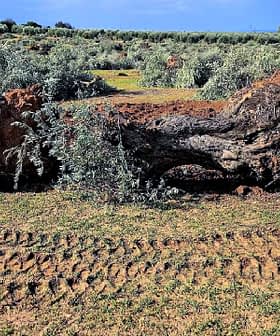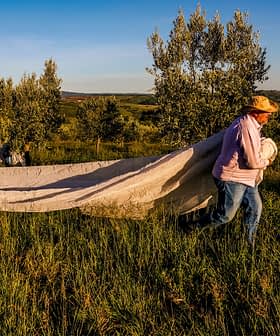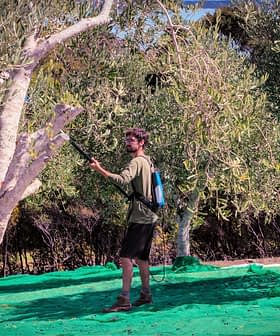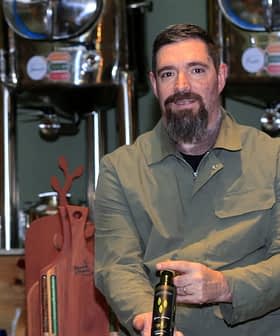Oleocampo's 3,500 Members Overcome Harvest Challenges with Quality Intact
Farmers in the massive Jaén-based cooperative sacrificed yield for a tenth straight year of award-winning quality.
 Oleocampo is a cooperative in Jaén, the world's olive oil capital. (Photo: Oleocampo)
Oleocampo is a cooperative in Jaén, the world's olive oil capital. (Photo: Oleocampo) Oleocampo, a cooperative in Jaén, Andalusia, is facing challenges due to extreme weather conditions that have significantly reduced olive production, prompting some small farmers to consider producing lower-grade olive oil. Despite these challenges, the cooperative is focusing on sustainability and biodiversity to mitigate the impact of climate change and support farmers in transitioning to high-density orchards for higher quality olive oil production. The high prices of olive oil are expected to benefit both traditional and high-density olive farmers in the region, with consumers increasingly valuing the health benefits and quality of extra virgin olive oil.
In the province of Jaén, situated in the heart of Andalusia, a large community of small farmers devoted to traditional cultivation demonstrates resilience in the face of a challenging olive harvest.
“We are experiencing much more heat than in the past, and we are seeing significantly less rain,” Luis Viedma, the commercial director of Oleocampo, told Olive Oil Times. “As these conditions persist, olive groves are under considerable stress.”
We maintain constant communication with the farmers before, during and after the season. Ultimately, the cooperative belongs to them. These 3,500 farmers own the company.
Oleocampo, a cooperative known for consistently producing award-winning extra virgin olive oil, combines almost 11,000 hectares of olive groves cultivated by about 3,500 olive farmers.
Its signature Picual monovarietal earned a Gold Award at the 2023 NYIOOC World Olive Oil Competition, its ninth consecutive award.
See Also:Producer ProfilesThough the cooperative has been around since 1994, it has been boosted by five olive oil milling companies joining its ranks over the past decade, incorporating their machinery, skills and tradition to the cooperative.
“At this time of year, in midwinter, we are experiencing temperatures of 24 ºC, which are almost pre-summer levels,” Viedma said. “The drought has taken a toll on the region. The reservoirs are down by 60 percent.”
Reservoir levels have dipped so low that the president of the Andalusian government has warned the provinces of Málaga, Seville and Córdoba will face severe water restrictions this summer if they do not receive at least 30 days of rain before then.
Oleocampo is coping with the harsh climatic conditions that have significantly reduced olive production over the last two seasons in Andalusia, the world’s largest olive oil-producing region.
“The harvest has not gone well,” Viedma said. “At the start of October, when the new season began, official estimates forecasted about 750,000 to 780,000 tons of olive oil for Spain. We are now probably heading in that direction, but we encountered problems with yield at the beginning.”
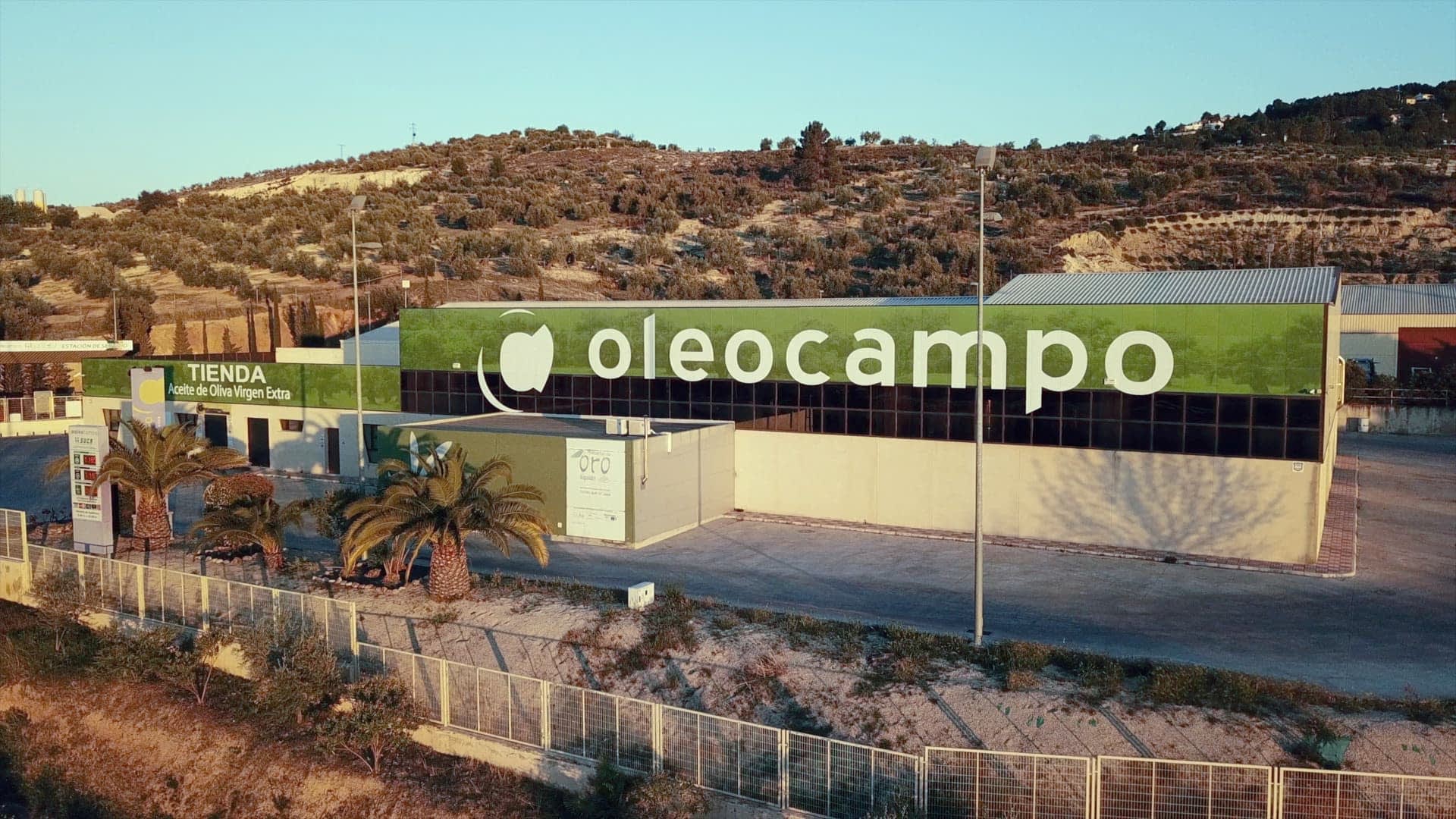
Over the past decade, five local mills have joined Oleocampo, bringing their modern equipment and expertise with them. (Photo: Oleocampo)
However, others have warned that olive oil production in Spain’s 2023/24 crop year may only reach 700,000 tons, slightly exceeding the 664,000 tons of the previous crop year.
Like many producers in the region, the oil content in the fruits at the beginning of the season was lower than expected.
“We knew that working with two, three, or even five percentage points less in yield would significantly reduce the final amount of olive oil,” Viedma said. “In the end, we managed to see good results.”
Still, the turmoil in the market and the rising prices of all grades of olive oil, including lower grades such as lampante, affected the decisions of some local small olive oil producers.
“If you offer a grower €7 or €8 per kilogram for lampante, it’s a price that might discourage them from maintaining the quality of their production,” Viedma said, suggesting that record-high prices might prompt some small farmers to collect olives later in the season for lampante production.
Lampante olive oil, traditionally harvested at the end of the season from olives on the trees and even those that may have fallen to the ground, requires significant refining before it is safe for human consumption.
On the other hand, the operating costs for producing extra virgin olive oil are considerably higher, as olives harvested for the highest grade of olive oil must be done early from carefully selected fruit and milled the same day.

Many of Oleocampo’s 3,500 members farm traditional groves, though some are transitioning to high-density. (Photo: Oleocampo)
Moreover, the low oil content in the olives prompted some farmers to delay harvesting in hopes of gaining yield with a late harvest, a choice that can also impact the final quality of the fruit.
“This scenario unfolds as we report a 50 percent drop in overall number of olives compared to the previous harvest, which was already a bad one,” Viedma said.
In the face of these challenges, sustainability and biodiversity are increasingly viewed as valuable strategies to mitigate the impact of climate change.
“We work with our farmers to encourage them to enhance their farming activities, adopting sustainable practices while preserving the soil, as demonstrated by Olivares Vivos,” Viedma said.
Olivares Vivos is an extensive project studying olive grove biodiversity to find ways to profitably and sustainably farm olives and protect the natural habitats of other endemic species in Andalusia.
“In Oleocampo, we also encourage farmers who have the ability to transition from traditional olive groves, with an average of about 100 trees per hectare, to intensive [high-density] orchards while safeguarding soil health,” Viedma said.
The cooperative offers farmers year-round support, including expert teams analyzing the trees throughout the season and advising on pruning and other agricultural techniques.
“We maintain constant communication with the farmers before, during and after the season,” Viedma said. “Ultimately, the cooperative belongs to them. These 3,500 farmers own the company.”
While some in the sector worry that high prices might hurt consumers, Viedma believes most people are increasingly aware that high-quality extra virgin olive oil is not a cheap commodity.
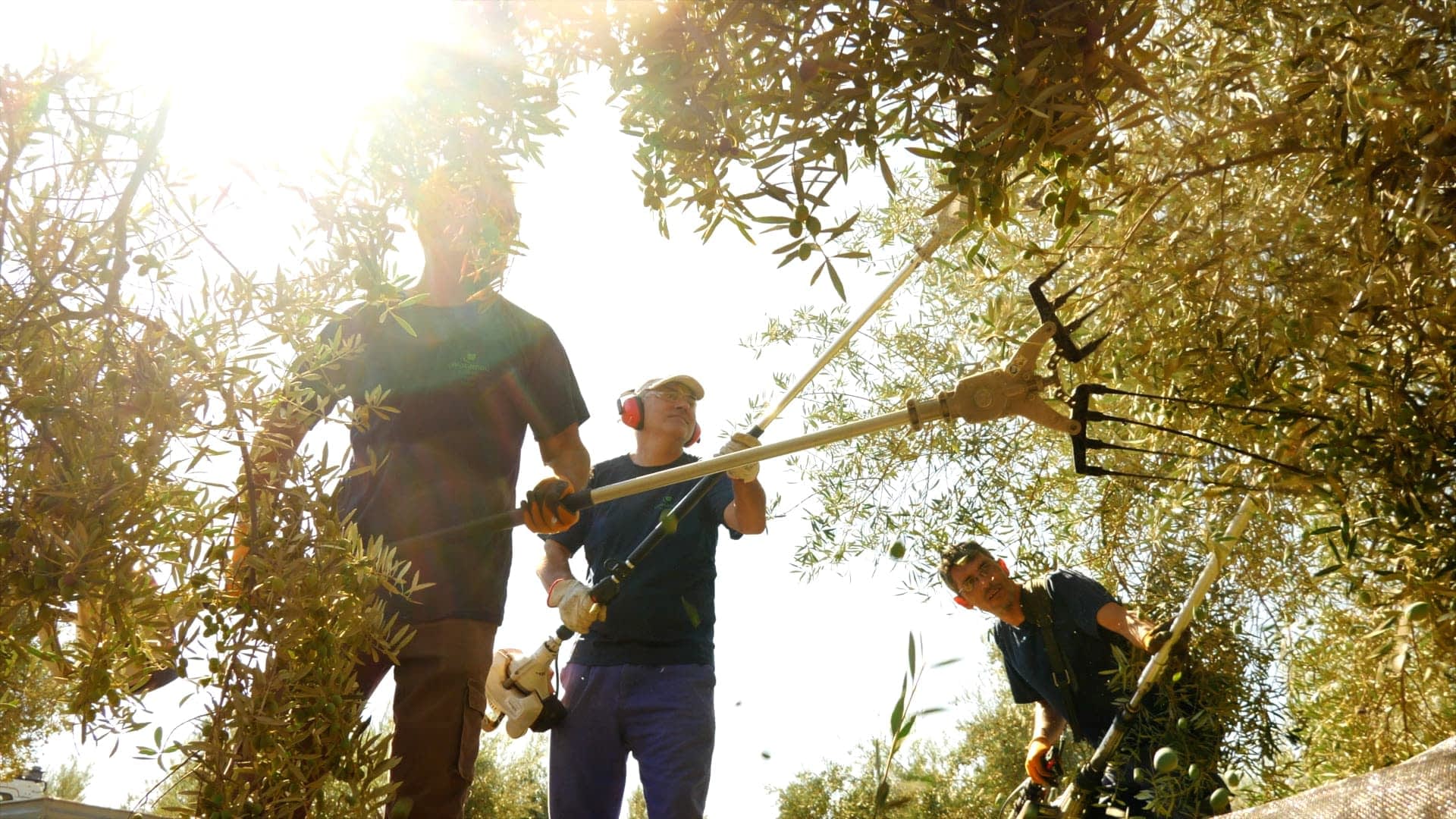
Producers in Andalusia expect another disappointing harvest after the first olives picked in the autumn had low levels of oil accumulation. (Photo: Oleocampo)
“The upside is that today, we see products priced at €10 per liter,” he said. “Consumers are highly engaged with extra virgin olive oil and its quality, becoming increasingly aware of its health benefits.”
“Furthermore, extra virgin olive oil prices are expected to remain high for a few years, as the output for the coming years is likely already sold,” he added. “With these prices, farmers with high-density groves will benefit significantly from economies of scale.”
Indeed, Viedma said that he believes high prices will also benefit olive farmers with traditional groves.
“Even traditional farmers will find themselves in a position to rely on numbers that are finally making sense,” he said.
“As for the future, we cannot control the weather, but we can manage the damage that crops might inflict on the ground and even work towards higher production volumes and less fluctuation in yields year over year,” Viedma concluded.
Share this article


